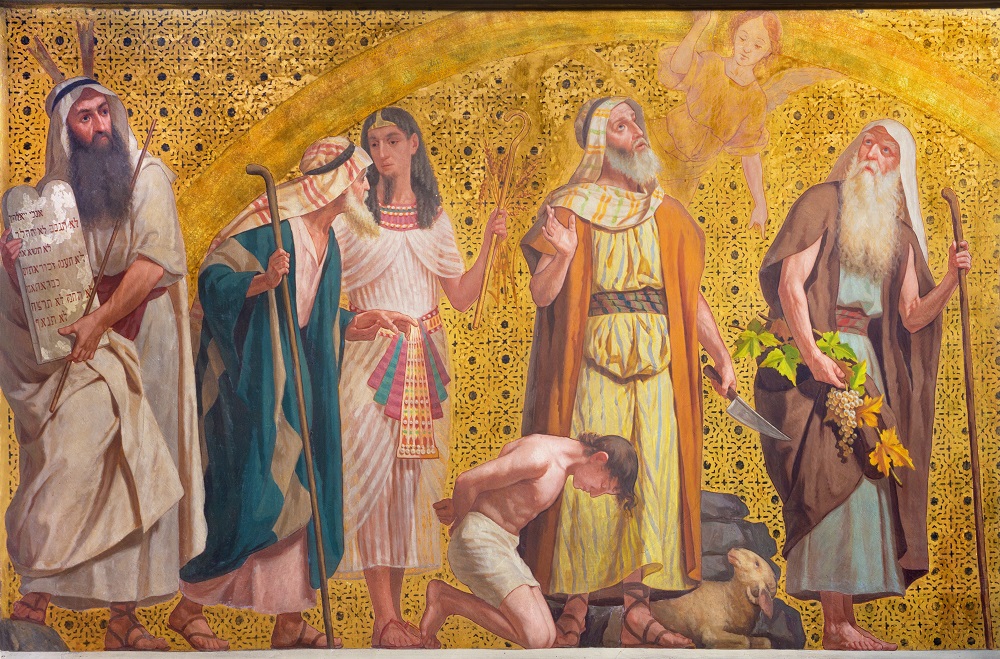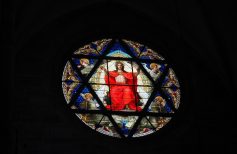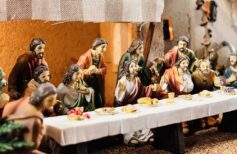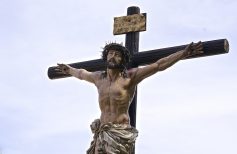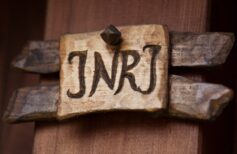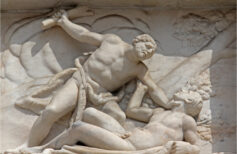The lineage of Abraham, or the genealogy of Jesus, has a fundamental importance in the history of Christianity, and can be considered a compendium of the entire history of the Jewish people. Let’s find out why.
Contents
Because in the first book of the Gospel of Matthew, and in the third of the Gospel of Luke in order to introduce the story of Jesus are reported respectively Abraham’s lineage, which starts from him and gets to Jesus, and an even larger genealogy that has its origins in the figure of Adam?
The reason is simple. At the time when the Gospels were written, it was still considered of the utmost importance to contextualize the facts of which one wanted to speak in a documented historical framework that had solid foundations, and that could not be questioned.
Jesus starts from the history of the Jewish people
To start the story of a character by listing his genealogy was typical especially of the Eastern world. In the case of the Gospels, it was even more evident that there was the need to create an historical basis around the figure of Jesus Christ that would indisputably link him to the history of the Jewish people. Thanks to these two genealogies Jesus becomes an integral part of the history of Judaism and of its three great Fathers: Abraham, Moses and David. For Christians who came from Judaism it was fundamental to be able to insert the figure of Jesus into the history of their people and the Fathers. It was also a way to support the claim of the Christian community to recognize Jesus as the Messiah.
It is no coincidence that in both genealogies Joseph is not presented as the biological father of Jesus, but as an adoptive father. The two evangelists needed to create a relationship between the Messiah and King David, reconnecting with the prophecy of the prophet Isaiah:
“A shoot will come up from the stump of Jesse, from his root a Branch will bear fruit. The Spirit of the Lord will rest soon him, spirit of wisdom and of understanding, the spirit of counsel and of might, the spirit of knowledge and fear of the Lord, (…) The wolf will live with the lamb, the leopard shall lie down with the goat; the calf and the lion shall graze together, and a little child shall guide them,” (Is 11,1-10)
Iesse, or Jesse was King David’s father.
But there is more. Both Matthew and Luke indicate Jesus as the fulfillment of the history of the Covenant and of the promise of Salvation between God and men. For Matthew this story begins with Abraham, for Luke it coincides with the very birth of humanity, embodied by Adam.
It must be said that Matthew mostly addressed the Judeo-Christians, and for this reason placing Abraham – who was considered the Father of the Chosen People – at the beginning of the genealogy, is a way to emphasize the continuity between Judaism and Christianity.
Luke, on the other hand, also addressed Christians of pagan origin, who had not known the traditions of the Jewish world. For this reason, he traces the origin of Jesus even further back, to Adam, whom he defines as the Son of God, inserting the figure of Jesus in a wider context, which refers to the different Jewish dynasties, and the ten antediluvian patriarchs (Adam, Set, Enos, Cainan, Maalaleèl, Iared, Enoc, Matusalemme, Lamec, Noah) and to the ten postdiluvians (Sem, Arpacsad, Selach, Eber, Peleg, Reu, Serug, Nacor, Terach, Abraham).
Judaism and Christianity differences
All this concern from Matthew to value the descent of Abraham to Jesus, and from Luke to go even further, sinking into the very roots of humanity, connects us to the differences between Judaism and Christianity, that we have already considered in a previous article. For a Christian it is obvious to think of Jesus as the son of God, since all the religious education he receives from an early age focuses precisely on His unavoidable identity. For today’s Jews, and even more so for those of the time when the evangelists were writing, Jesus had been a simple prophet.

The differences between Judaism and Christianity
What are the differences between Judaism and Christianity? Is the God of the Jews the same as the Christians? …
So it was of fundamental importance to convert the Jews to Christianity to ennoble His earthly figure as much as possible, so as to make him recognizable as the long-awaited Messiah.
If the Christian religion begins with Jesus, the Jewish religion begins with Abraham, the first man to whom God turned. The covenant between God and men, always according to the Jews, was deepened then thanks to Moses, who received from God the Ten Commandments, guide of life and faith.
Even today, honoring and pursuing one’s relationship with God through study and prayer, reconnecting with what the Fathers did before him, is one of the fundamental duties of every Jewish man. Here is another confirmation of the importance of the genealogies of Matthew and Luke.
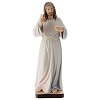
The value of numbers
We must not forget the symbolic value of the two genealogies. Meanwhile, we notice how the number seven, the favorite number in the Jewish tradition, used to indicate the association with God and represented sanctification and purification. Just to give an example, the most important Jewish holidays lasted seven days, and the Menorah, the candlestick symbol of the Jewish religion, has seven arms.

Even the number three had a symbolic value: repeating a gesture or a word three times charged them with greater power and completeness. In the Sacred Scriptures the number three often recurs: we think of the three temptations of Jesus, or Peter who denies the Master three times, and so on.

Saint Peter and Paul, why are they celebrated together?
On June 29, Saint Peter and Paul are celebrated. Two apostles, two very different men, both fundamental…
In the genealogy of Matthew, which starts from Abraham and arrives at Jesus, we can identify three groups of fourteen names (multiple of seven), that is, six seven-years. Jesus is the first name of the seventh group.
In Luke’s genealogy, which goes from Adam to Jesus, the names contemplated are those of seventy-seven ancestors, which we can divide into eleven seven-years. Jesus is the first name of the twelfth group.
The numerical references are many, and make us understand how these genealogies should not be read as biographical documents, but theological ones, where everything is aimed at expressing in the most convincing way a spiritual message.
Jesus, Adam and the tree of life
We said that for Luke, the history of Salvation begins with our forefathers Adam and Eve, and ends with Jesus. Deepening the bond between Jesus and Adam would require much more space, because it is truly fundamental in the history of the Christian religion.

The story of Adam and Eve
Who does not know the story of Adam and Eve, the first man and the first woman? But are we really…
Adam was the first man, created by God in His image and likeness, and yet false, so much so as to betray the trust of His Creator and commit original Sin.
Jesus, the new man, God made flesh, is the new Adam, returned to the world to save humanity from its sins. Where Adam was imperfect, Jesus is perfection, and in His sacrifice humanity finds the lost innocence of Eden, and with it the gift of immortality that was once guaranteed by the fruits of the Tree of Life, which grew in the heart of the earthly Paradise. In Jesus the Tree of Life returns to bloom, and it is the Cross, symbol of infinite love and eternal life for those who are willing to eat its fruit.

The meaning of the Tree of Life
All religions, since the origins of mankind, are somehow tied to trees. The tree of life deserves a special mention. It appears in the Holy Scriptures…
The Women in Jesus geneaology
A surprising element in the lineage of Abraham presented by Matthew, is the presence of four women, to which Mary is added, mother of Jesus. Surprising and unusual, because in the genealogies of the Jewish world, there was no concept of parents, but only of fathers who bore children. Moreover, the women mentioned in the genealogy of Jesus, excluding his mother Mary, are not famous people linked to the history of the Jewish people, but pagan women with an uncertain reputation, such as Tamar, protagonist of a case of incest, or Racab, a prostitute by profession. Ruth, who was widowed, also conceived Obed, King David’s great-grandfather, out of wedlock, while Bathsheba was seduced by David even though she was married, and gave birth to Solomon.

From Eve to Mary: the figure of the Mother in the Bible
The mother, pillar of every family, beating heart and source of life for those who gravitate around her…
Among the various theories on the reasons of the inclusion of these four female figures in the lineage of Abraham listed by Matthew, the possibility has been evaluated that, as sinners, all express the message of salvation and atonement for sins embodied by Jesus.
Moreover, they were all foreigners, and they lived an irregular condition with men, including Mary, wife of Joseph, who, however was not the father of his Son.
Perhaps, Matthew wanted to show the greatness of God, who knew how to make these women mothers despite the difficulties, or perhaps expand the contextualization of the figure of Jesus, arguing that he had not only Jewish blood, but also foreign, by virtue of his kinship with these women.
It must be said that the four sinners mentioned are not the only controversial characters present in the genealogy of Jesus. David, Solomon, Ahab and Manasseh were guilty of shameful, even bloody deeds.
But this is also part of the message that the Evangelist Matthew wanted to express, namely that Jesus, descendant of the Fathers of the Jewish people, but also incarnation of God, who chooses to descend among men although aware of their imperfections, is the new Adam, the new man created in the image of God’s likeness to redeem all of humanity.

